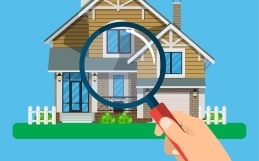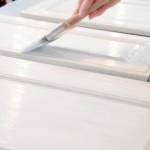 Have you ever heard the term functional obsolescence? In real estate, the term refers to features that are impractical or undesirable. For example, lack of closets, outdated wiring or plumbing, even an architecturally ‘out of place’ style within a neighbourhood can all be examples of functional obsolescence.
Have you ever heard the term functional obsolescence? In real estate, the term refers to features that are impractical or undesirable. For example, lack of closets, outdated wiring or plumbing, even an architecturally ‘out of place’ style within a neighbourhood can all be examples of functional obsolescence.
If you’re a buyer or a seller, I hope you’re working with an experienced Realtor. But regardless, I believe consumers should be informed. It’s important to have a basic understanding of functional obsolescence – and here’s why.
For Buyers
Functional obsolescence can affect your investment in two ways:
- Value. You certainly don’t want to pay extra for a feature that isn’t really a bonus, or might even need to be remedied. Case in point, I took a buyer through a home that had a newly-renovated bathroom on the main floor, complete with soaker tub, shower, and lots of bells and whistles. It was fantastic! The problem? All of the bedrooms were upstairs. It was impractical, to say the least. The list price reflected the value of the renovations, but failed to acknowledge it was a case of functional obsolescence – i.e. poor planning. In another case, I took a client through a home that was being sold with all appliances – including the dishwasher that was located in a separate room off of the kitchen. My client and I scratched our heads as we tried to imagine how, day in /day out, you’d unload a dishwasher, then travel back to the kitchen cupboards. All the awkward arrangement served to do was to point out that the kitchen was going to need a reno.
- Resale. As a buyer, you may appreciate a property’s other attributes enough to overlook aspects of functional obsolescence, but down the road others may not. Don’t forget that, at some point, you’ll likely sell that property. Functional obsolescence in a home can affect both resale value and time on market.
For Sellers
If you’re a homeowner, you should be able to recognize functional obsolescence in your own property. You have two options. First, live with the issue and price your home accordingly when the time comes to sell. Or, take steps over time to remedy the problems.
When I bought my 1860s-built home, it had one tiny closet. I hired a contractor to build closets in two of the bedrooms. I lost a bit of square footage in the rooms, but I didn’t lose any of the charm of my historic home, and I added a practical element that most buyers today consider a necessity. Over time, I’ve also taken steps to upgrade other aspects of my home to try to bring it to a more modern standard of insulation, plumbing, electrical, and other not-very-fun ways to spend money.
Speaking of fun, this really isn’t the fun stuff of real estate. The fun stuff is looking at houses, falling in love with a neighbourhood, decorating, etc. But this is the business of real estate – the dollars and cents – and understanding functional obsolescence can help you avoid the least fun thing of all: losing money on a real estate investment.






